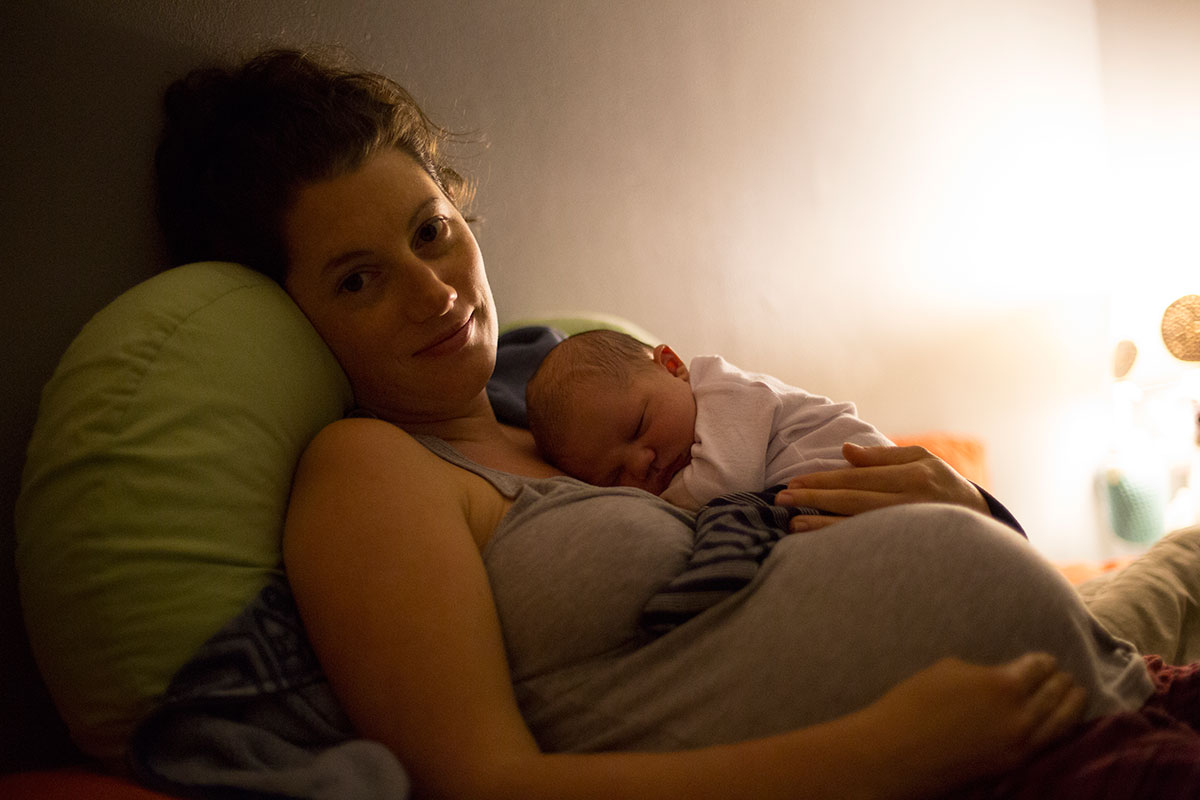Why Babywear?
A PEACEFUL 4TH TRIMESTER & BEYOND
A PEACEFUL 4TH TRIMESTER & BEYOND
The 4th trimester looks at the first 12 weeks after birth, and these are often the most challenging weeks for any new Mom and Dad.

UB Founder Shannon & her baby boy at just 2 days old.
The above photo is such an accurate representation of what the 4th trimester looks like. Basically, your baby moves from the inside of your bump, to the outside of your bump, and that’s exactly where they want to stay!
You are literally thrown into the deep end when your baby arrives. Not only is it overwhelming for you, but your baby also has to come to terms with life outside the womb.
Towards the end of your pregnancy you always feel like you can’t wait to have your baby on the outside, but we’ve heard so many new Moms say that they’d give anything to put them back inside for just a few hours a day! It’s so much easier because you have 2 arms free and can still do what you want to do, when you want to do it. But as soon as your 4th trimester starts, it’s your baby who’s calling the shots!
ENTER: BABYWEARING
Babywearing is a wonderfully natural way to help your new babe ease into the world with all it’s new sensory experiences, while still being able to feel and hear the familiar heartbeat that they’ve been so intimately involved with for the last 40 weeks. Besides keeping your baby calm, it will also help you ease into motherhood and enjoy all the benefits that babywearing has to offer.
BABYWEARING BENEFITS
Time is one of the few things in this world that you can’t replace. When you’re having a rough time trying to balance baby and life, it’s very easy to wish yourself into the future, into a time when your baby doesn’t need you every second of the day. But it doesn’t have to be that way.
There is life after baby and your Ubuntu Baba baby carrier will help you get there.
BENEFITS TO MOM
BENEFITS TO BABY

No, there is no such thing as spoiling your baby – this is an outdated old wives tale. Your baby needs as much love and physical touch as possible to help them feel comfortable in their new environment. This is what baby expert Meg Faure has to say on the subject:
“Until 200 years ago all babies were carried on their moms and dad, in slings and carriers. Most babies love to be carried and those who spend a lot of time in a sling or carrier around their parents’ bodies tend to cry less than those who don’t. By keeping your baby close to you, you will provide him with physical contact, security, stimulation and movement, which are all excellent conditions for his development.” Read Meg’s full article here.